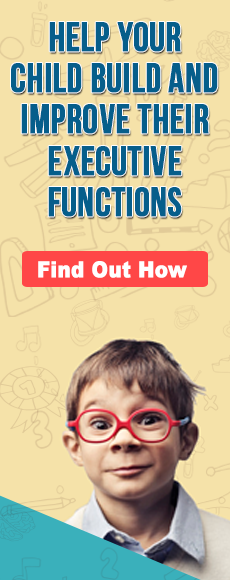
Self-Control Activities
Whether your child realizes it or not, they practice self-control in video games when they manage their frustration and persist at a task. When they play a multiplayer game with others, this self-control practice becomes about curbing language and managing emotions. Your child gets the most out of this self-control practice when you get involved.
Talking about and playing video games with your kids not only gives them validation and support, it offers you opportunities to help them reflect on and make connections between the skills they use in the game and the skills they use in the real world. You can help them take that practice to the next level by working on one or more of these activities together.
Response Inhibition
You can provide some easily learned strategies that will train your child to practice self-restraint. Help your child to identify situations that require self-control and encourage him to think of actions that will make it easier to remember and practice. The following are some ideas for practicing response inhibition with your child:
- put your hands in front of your mouth to prevent interrupting
- sit on your hands when it is not time to get up and move around yet
- keep your hands in your pockets while in line to prevent pushing or shoving others
Pairing an impulsive child with a classroom buddy who is able to display restraint often makes the impulsive child more aware of his actions. In home and social settings, impulsive children often feed off of each other, and combinations of two or more impulsive children can quickly lead to out of control behavior. Encourage your child to carefully observe his peer buddy and other positive models of self-restraint. Use real-life observations of self-control (or lack thereof) as ways to talk more about the subject.
Use videos to help your child observe examples of both his impulsive behavior and times of self-restraint. The opportunity to step back and look at his actions might help him to understand the inappropriateness and ineffectiveness of his behavior. This may then lead to the development of new strategies for similar situations in the future. You could also have your child “act” in a video where he shows self-control and then view and discuss it together. Potential scenarios for this type of acting include dealing with a sibling who is teasing him, waiting his turn to play a game, or losing in a game.
This is easy at home. At school, movement will need to come between classes, at recess or by running errands for the teacher. Encourage more “regulated fidgeting” by providing a squeeze ball, a small polished stone, or something with which to “fiddle”. Also encourage your child to be able to identify the need to move and to find strategies appropriate to the situation. One very underused strategy that can be practiced at home and then used in many settings is stretching, both in standing and in sitting positions.
Self-Regulation of Affect
Build their tolerance for frustration by slowly increasing the difficulty level in games and activities. While playing basketball, take turns shooting 10 layups per person and then move back 2 feet and try it again. Let them know that even talented people experience failure. Tell them that even the best baseball players get a hit only 3 out of every 10 times at bat. Reveal the fact that you didn’t get A’s on every test in school, and their teacher probably didn’t either. Help them to identify areas in their lives where they can consistently try their best but still be successful only a limited percentage of the time. Some examples of areas where perfection is not always possible: sports, musical performance, and video games.
Help children to narrate explanations of why they or somebody else might behave a certain way. Children who talk about their feelings (i.e., “I’m angry because my brothers always tease me when I lose”) are more likely to be able to regulate their emotional expressions. You can set an example for your child by using brief narratives of your own; for instance, describing how upset you were when your boss or coworker gave you a large project to do just as you were leaving to go home. You could also role-play some possible reactions to hypothetical situations. Possible scenarios include getting blamed for something you didn’t do, being left out by your friends, or having to do someone else’s chore because that person forgot to do it.
It is often very helpful to talk about emotional regulation in other terms, such as feeling temperatures, adjusting the volume on feelings, or keeping your cool. Redefine ways to help children think about strategies for emotional regulation. For instance, “shedding a layer” (letting go of a particular concern or emotion), or “turning down the volume” (consciously choosing to reduce the importance of a situation) can lead to feeling more comfortable. It can also help to focus on situations which you have some control over. For example, you can’t change the weather but you can choose to wear a warmer coat. You can’t silence the neighbor’s supersonic leaf blower but you can wear earplugs or turn on a fan to reduce the disruptive effects of the noise on your power of concentration. Your child can also lessen feelings of intensity by deliberately focusing on areas of personal interest as a distraction, such as listening to her favorite music CD, making a wishlist of toys, books or games, or engaging in an enjoyable activity with a friend.
When your child makes a mistake, display understanding and briefly articulate why it is better for you to forgive than to remain angry and describe ways she could correct what she has done and do better next time. Keep in mind that your goal is to teach alternatives to angry outbursts and emotional dysregulation. Provide a “script” the child might use to forgive a sibling or friend for a mistake. Help her to identify chances to practice forgiveness and praise efforts at doing so.




